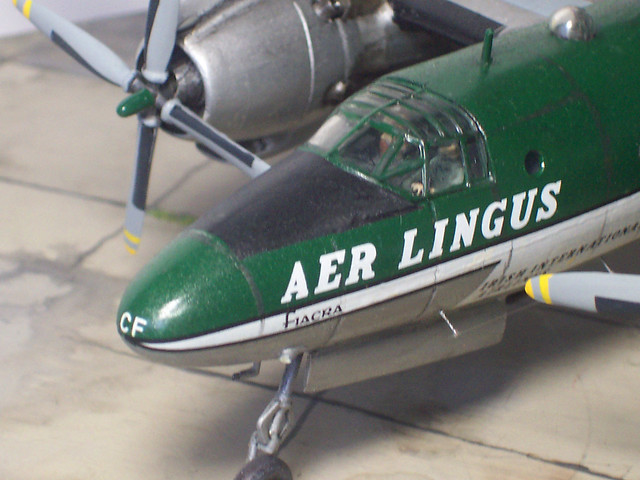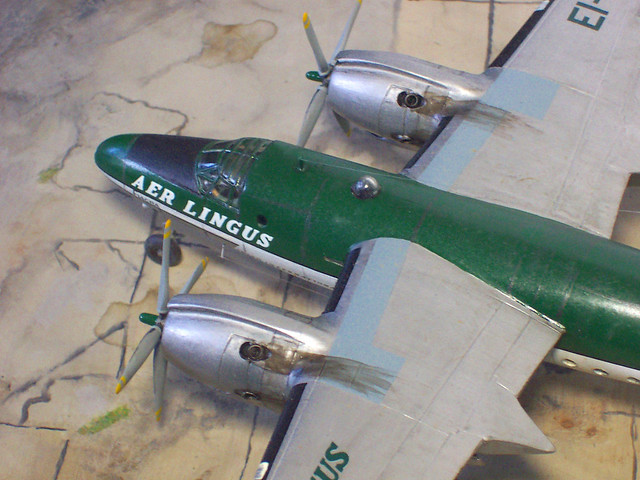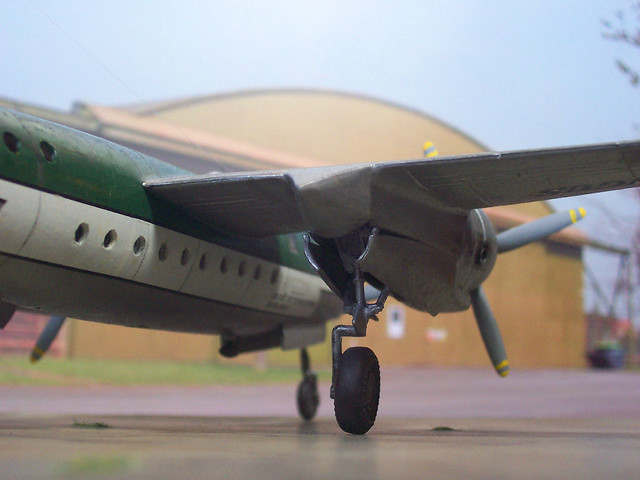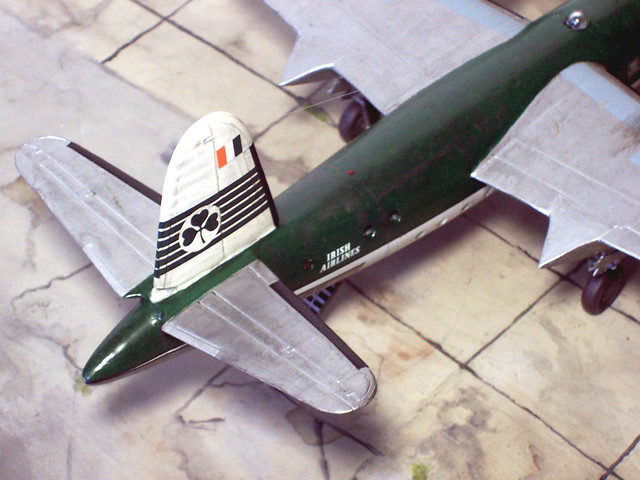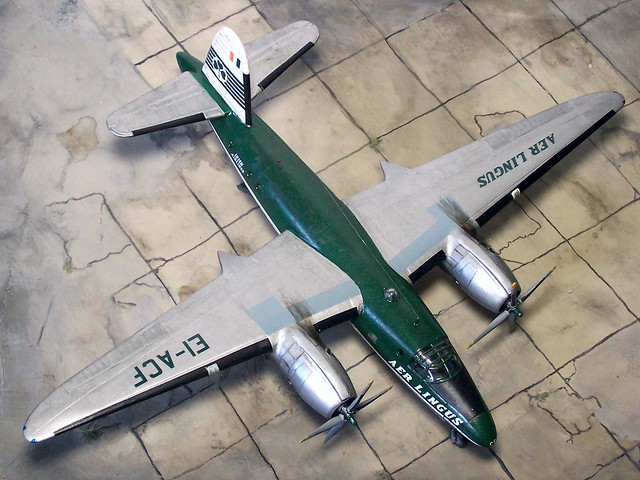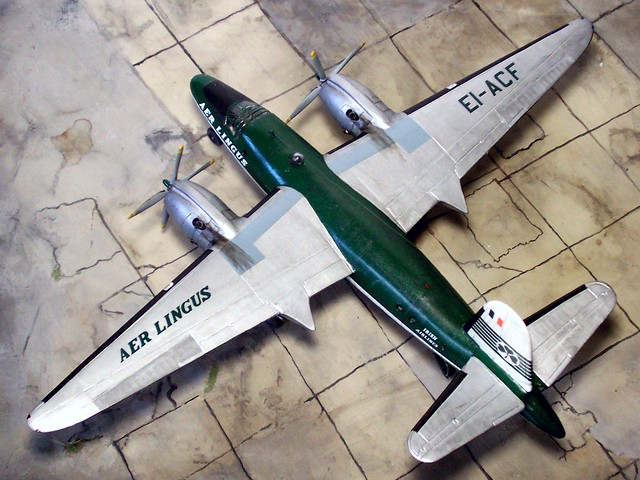Erster Beitrag für einen Group Build auf whatifmodelers.com unter dem Thema "De-Militarize it" - es gab ja nach WWII einige Konversionen von Militär- in Zivilflugzeuge, bzw. Versionen zum Personentransport. Einige waren sogar ganz erfolgreich, wie die Avro Lancastrian oder die On-Mark-Umbauten der A-26 (Marksman, Merchant). Auch die Martin Marauder, immerhin ein mittlerer Bomber, fiel privaten Nutzern zu, aber sie war nicht sonderlich populär - vermutlich zu groß und zu teuer im Unterhalt. Das hält Modellbauer aber nicht davon ab, die Möglichkeiten auszuloten... Und so entstand aus einer Matchbox-Marauder und mit einigen Veränderungen (neue Motoren, erweiterte Spannweite, neue Verglasungen, Gangway sowie einem Satz Aufkleber von TwoSix Decals für eine 1955er Fokker F.27) die Hunting Percival Aircraft P.26 Commuter, in Diensten der Aer Lingus.

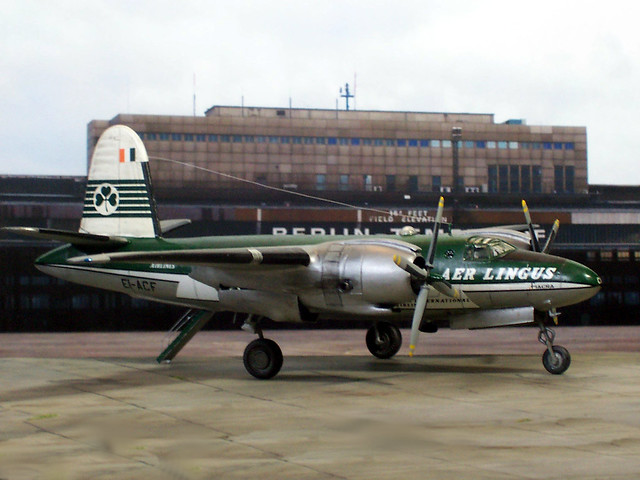
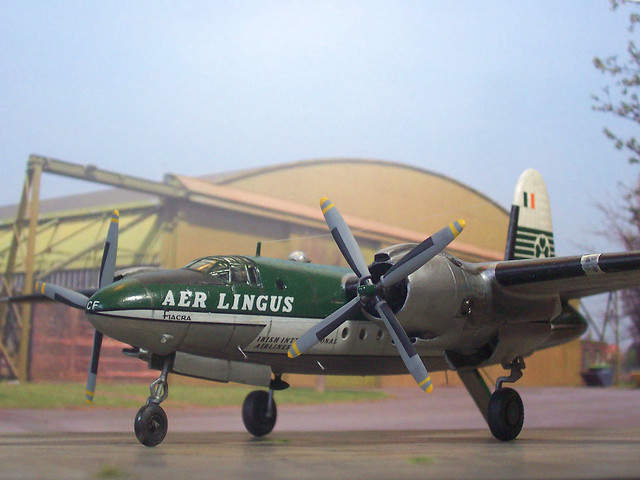 Some background:The Martin B-26 Marauder was a World War II twin-engine medium bomber built by the Glenn L. Martin Company. First used in the Pacific Theater in early 1942, it was also used in the Mediterranean Theater and in Western Europe.
Some background:The Martin B-26 Marauder was a World War II twin-engine medium bomber built by the Glenn L. Martin Company. First used in the Pacific Theater in early 1942, it was also used in the Mediterranean Theater and in Western Europe.
After entering service with the U.S. Army, the aircraft received the reputation of a "Widowmaker" due to the early models' high accident rate during takeoffs and landings. The Marauder had to be flown at exact airspeeds, particularly on final runway approach and when one engine was out. The 150 mph (241 km/h) speed on short final runway approach was intimidating to pilots who were used to much slower speeds, and whenever they slowed down below what the manual stated, the aircraft would stall and crash.
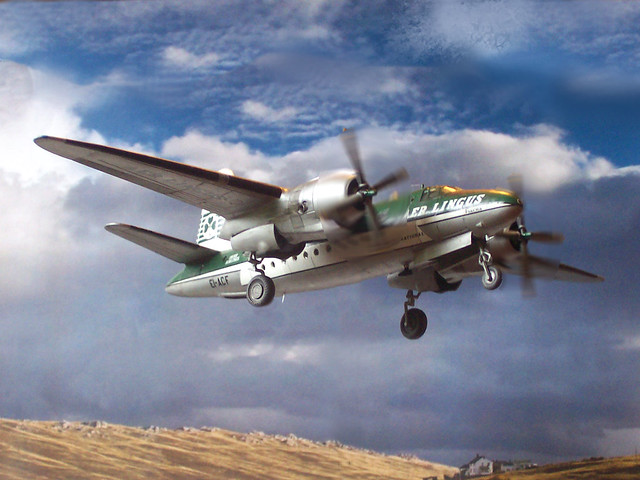


The B-26 became a safer aircraft once crews were re-trained, and after aerodynamics modifications (an increase of wingspan and wing angle-of-incidence to give better takeoff performance, and a larger vertical stabilizer and rudder). After aerodynamic and design changes, the aircraft distinguished itself as "the chief bombardment weapon on the Western Front" according to a United States Army Air Forces dispatch from 1946. The Marauder ended World War II with the lowest loss rate of any USAAF bomber.
A total of 5.288 were produced between February 1941 and March 1945. By the time the United States Air Force was created as an independent service separate from the Army in 1947, all Martin B-26s had been retired from U.S. service. Furthermore, after the end of hostilities in the European theatre of operations, many airframes with low flying hour numbers were left in British airfield.



This was the situation when establishing Hunting Aircraft in 1944 by the purchase of Percival Aircraft: this business was absorbed into the British Aircraft Corporation in 1959.
At the end of 1945 the young British company Hunting Air Travel Ltd., a division of Hunting plc., based at Luton Airport, entered the scene - actually a commercial airline, not an aircraft manufacturer. The new airline began commercial operations from Bovingdon Airport at the start of 1946, and the lack of suitable passenger aircraft for domestic routes (or to continental neighbors) led to a private conversion program for leftover B-26 airframes.

This work was done by Percival Aircraft Ltd, which had become part of Hunting in 1936 and also had its headquarter at Luton. At first, only five B-26B bombers were planned to be converted into P.26 airliners. The airframes underwent considerably changes, primarily stripping them off of any military equipment, closing the bomb bays and adding a passenger cabin with appropriate seating and entry. Furthermore, the bombers' original R-2800 engines were replaced by more powerful and efficient R-3350 radials with 2.000 hp/1.470 kW each. This was a simple task, since this engine had been an early design options and the mountings were compatible.


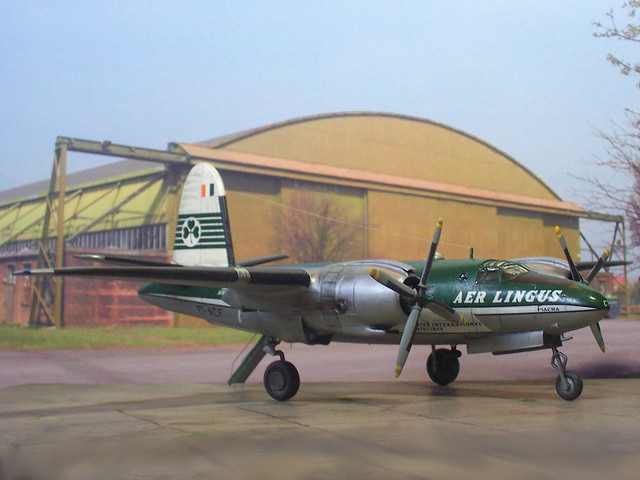
Other modifications included an enlarged wingspan, which was intended for a more economical flight as well as a reduced landing speed, especially when loaded.
The revamped aircraft entered service in 1951 when Hunting Air Travel changed its name to Hunting Air Transport. Flying primarily on the British Isles, the aircraft attained immediately some interest from other small airlines, also from continental Europe.
When Percival Aircraft Ltd changed its name to Hunting Percival Aircraft in 1954, a total of 21 B-26 bombers had been converted for Hunting-Clan Air Transport (6, Hunting Air Transport had changed its name in 1953), Aer Lingus (6), Derby Airlines (4), Sabena (3) and Manx Airlines (2).



All of these differed slightly, being tailored to their operators' needs, e. g. concerning seat capacity, engines or entry configurations. The last machines were re-built for Aer Lingus, with 27 passenger seats (nine rows in 2+1 configuration), a crew of four, and integral boarding ladder under the rear fuselage (instead of standard side doors). Furthermore, these final machines were driven by slightly more powerful (2.200 hp/1.640 kW) turbo-compound R-3350 engines, which offered a considerably improved fuel efficiency and an extended range (+20%).
By that time the civil aircraft industry had undergone a major recovery and new models like the turboprop-driven Fokker F.27 Friendship entered the scene - faster, with bigger passenger capacities and more efficient, and the P.26 could not keep up anymore. Another big weakness was the lack of a pressurized cabin, so that the P.26 could only operate at medium altitude. Until 1960 all remaining P.26 were withdrawn and scrapped, most of them had reached their service life, anyway, but operational costs had become prohibitive.
General characteristics: Crew: 4 (pilot, navigator/radio operator, two service)
Capacity: 21–32 passengers
Length: 58 ft 3 in (17.8 m)
Wingspan: 79 ft 3 in (24.20 m)
Height: 21 ft 6 in (6.55 m)
Wing area: 734 ft² (66 m²)
Empty weight: 24.000 lb (11.000 kg)
Loaded weight: 37.000 lb (17.000 kg)
Powerplant: 2× Wright R-3350-745C18BA-1 radial, each rated at 2.200 hp (1.640 kW),
driving four-bladed propellers
Performance: Maximum speed: 287 mph (250 knots, 460 km/h) at 5.000 feet (1.500 m)
Cruise speed: 225 mph (195 knots, 362 km/h)
Landing speed: 100 mph (79 knots, 161 km/h)
Range: 3.420 mi (2.975 nmi; 5.500 km)
Service ceiling: 21.000 ft (6.400 m)
Wing loading: 46,4 lb/ft² (228 kg/m²)
